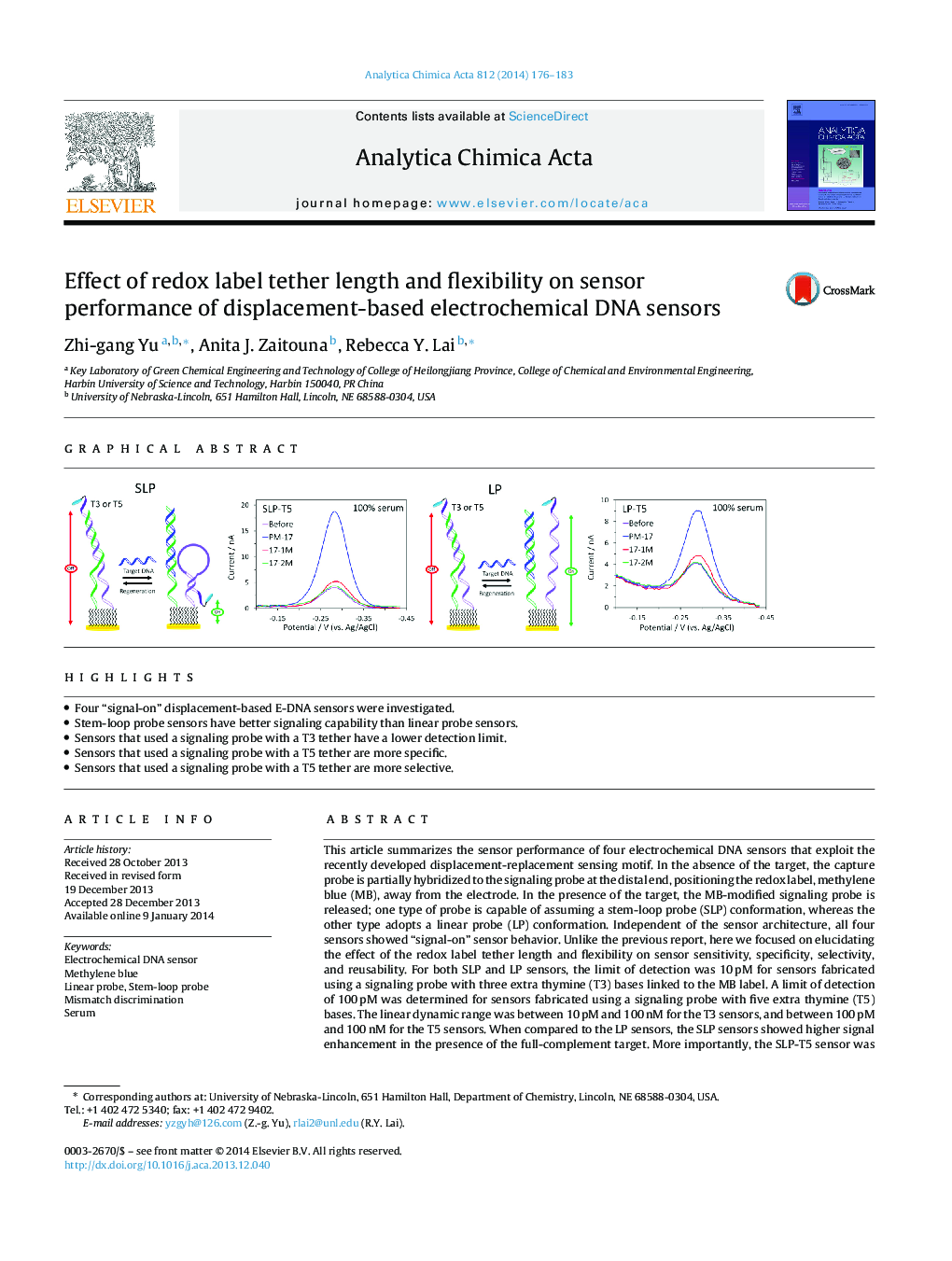| کد مقاله | کد نشریه | سال انتشار | مقاله انگلیسی | نسخه تمام متن |
|---|---|---|---|---|
| 1164149 | 1491020 | 2014 | 8 صفحه PDF | دانلود رایگان |
• Four “signal-on” displacement-based E-DNA sensors were investigated.
• Stem-loop probe sensors have better signaling capability than linear probe sensors.
• Sensors that used a signaling probe with a T3 tether have a lower detection limit.
• Sensors that used a signaling probe with a T5 tether are more specific.
• Sensors that used a signaling probe with a T5 tether are more selective.
This article summarizes the sensor performance of four electrochemical DNA sensors that exploit the recently developed displacement-replacement sensing motif. In the absence of the target, the capture probe is partially hybridized to the signaling probe at the distal end, positioning the redox label, methylene blue (MB), away from the electrode. In the presence of the target, the MB-modified signaling probe is released; one type of probe is capable of assuming a stem-loop probe (SLP) conformation, whereas the other type adopts a linear probe (LP) conformation. Independent of the sensor architecture, all four sensors showed “signal-on” sensor behavior. Unlike the previous report, here we focused on elucidating the effect of the redox label tether length and flexibility on sensor sensitivity, specificity, selectivity, and reusability. For both SLP and LP sensors, the limit of detection was 10 pM for sensors fabricated using a signaling probe with three extra thymine (T3) bases linked to the MB label. A limit of detection of 100 pM was determined for sensors fabricated using a signaling probe with five extra thymine (T5) bases. The linear dynamic range was between 10 pM and 100 nM for the T3 sensors, and between 100 pM and 100 nM for the T5 sensors. When compared to the LP sensors, the SLP sensors showed higher signal enhancement in the presence of the full-complement target. More importantly, the SLP-T5 sensor was found to be highly specific; it is capable of discriminating between the full complement and single-base mismatch targets even when employed in undiluted blood serum. Overall, these results highlight the advantages of using oligo-T(s) as a tunable linker to control flexibility of the tethered redox label, so as to achieve the desired sensor response.
Figure optionsDownload as PowerPoint slide
Journal: Analytica Chimica Acta - Volume 812, 17 February 2014, Pages 176–183
